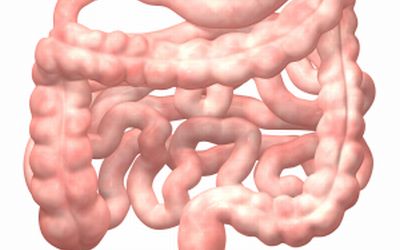FibeBiotics Puts Gut, Immune Health in Spotlight
May 3, 2013

The rise in the health and well-being sector has led to greater interest from consumers to move a step further and actively prevent the onset of disease. This sector holds huge potential for nutraceutical manufacturers, as immunity boosters and products claiming to halt illnesses such as colds and flu already popular.
Understanding the way ingredients interact with the body to improve health is vital to creating effective products. In 2012, the European Union supported the industry and invested 6 million into the FibeBiotics project, which analyzes the effect of non-digestible fibers on gut and immune health. Here, Jurriaan Mes, Food & Biobased Research, who is speaking on the project at the Vitafoods Europe Conference later in May, offered INSIDER an exclusive look at what the project involves and some of the tools it aims to provide for the industry.
INSIDER: Can you tell us a little about the FibeBiotics consortiumspecifically when was it founded and by whom, and what is the goal of this group?
Jurriaan Mes: I started the FibeBiotics project in 2010 in my role at Food & Biobased Research, Wageningen UR. Together with previous contacts based in Europe, we started putting together a proposal on polysaccharides. After the initial layout was completed, we contacted other potential partnersboth research bodies and SMSEs working in Europe.
In January 2011, the project was submitted to the KBBE (Knowledge-based Bio Economy) division of the European Commission and was selected for progression from 30 submitted proposals. The project kicked off in January 2012 with the ultimate goal of creating a toolbox to support the industry with methods that can be used in product development, based on bioactive polysaccharides, which could lead to products that support the immune system.
INSIDER: There is mention of a "toolbox" to analyze fiber compounds; what type of tools will be available to industry and how will they be able to use these to innovative new fiber-based products?
Mes: Although analyzing fiber compounds using biochemical methods is part of the toolbox, it is not the only area we are working in. It also includes tools to analyze bioactivity on specific gut and immune cells; control fermentation studies in order to compare different fibers; study the direct effect on the gut wall; cost-efficiently profile microbiota; and design efficient clinical trials including information on which biomarkers are the most informative, number of people needed for pivotal trials, etc.
These methods are now being developed and validated based on six different compounds. In the future, in response to requests from the industry, we hope to be able to extend the project to other polysaccharides as well as prebiotics and probiotics. We would use the same tools, allowing us to make a prediction as to whether the new compound or product has a high possibility of having immune supportive activity in vivo. Following this, we can carry out a trial to confirm the results and provide information for consumers about the effect of a certain product.
INSIDER: Can you share some of the preliminary first year results from the human pilot trials?
Mes: Unfortunately not. At the moment, we can only talk about the trial design, but we are still in the process of analyzing biomarkers and writing a statistical plan. Once this has been completed, we can un-blind the trial and start the task of analyzing the collected data. We expect to be able to announce the first results of the analysis in October 2013.
For further details about Vitafoods Europe and Finished Products Europe, or to register, visit vitafoods.eu.com or finishedproductseurope.com.
You May Also Like




.png?width=800&auto=webp&quality=80&disable=upscale)